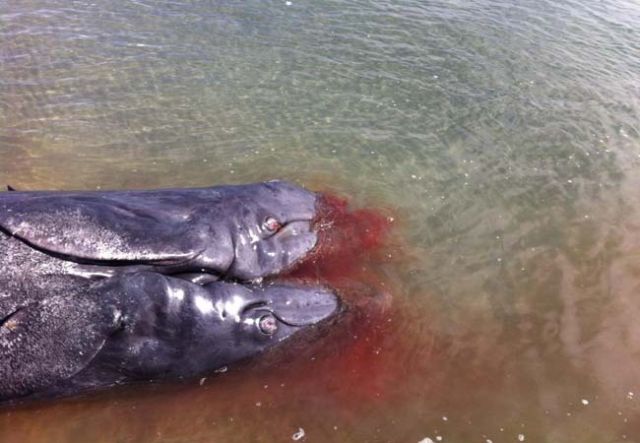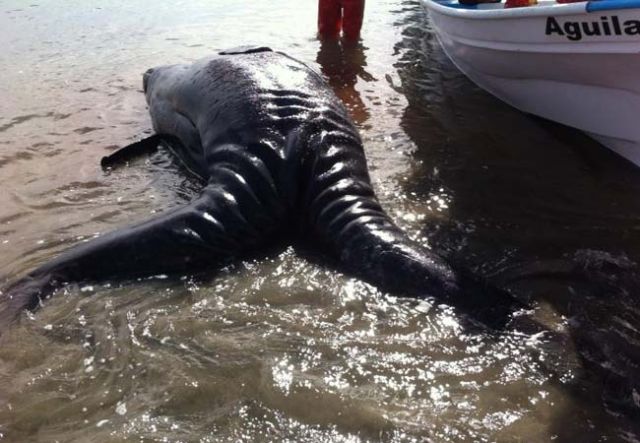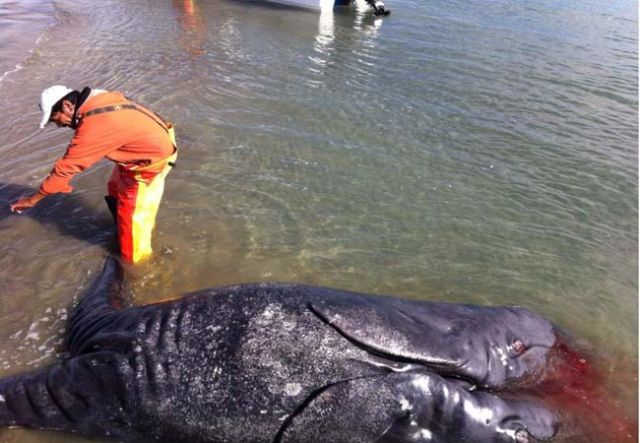Early-Week Polar Plunge Could Be Winter's Coldest
This does not include South Florida. The arctic air first plunged into the Upper Midwest, northern Plains and northern Rockies on Sunday and is expected to continue pressing to the Gulf and Atlantic coasts through Tuesday. The magnitude of this cold blast will be enough to produce a far-reaching threat of frostbite, hypothermia, frozen pipes and water main breaks.
Care should also be taken to ensure that livestock and other animals housed outdoors have adequate shelter. Especially across the Midwest and Northeast, officials may decide to cancel or delay school due to the extreme cold. Some vehicles may struggle or fail to start.
While highs will be held to the 30s southward to the I-10 corridor, the Midwest and Northeast are bracing for the harshest conditions. Minneapolis, Chicago and other communities in the Upper Midwest will endure two consecutive days of subzero highs on Monday through Tuesday. Overnight lows will drop to 20 below zero or lower from North Dakota to the western suburbs of Chicago. Grand Forks, N.D., will bottom out at around 30 below zero. Across the interior Northeast, high temperatures will be held to the single digits and teens on Tuesday and Wednesday. Fargo, N.D., Des Moines, Iowa, Minneapolis, Chicago, Cincinnati and Pittsburgh are on the list of cities that could rival their lowest temperatures of the season. For locations in the I-95 corridor of the Northeast, temperatures will stop short of breaching season lows but will still be painful to endure.
Biting winds will usher in frigid air, creating dramatically lower AccuWeather.com RealFeel® temperatures.
Where snow covers the ground, the winds will worsen the situation for motorists by blowing and drifting the snow around. In the most extreme cases, there will be local ground blizzards. RealFeel® temperatures will be extremely dangerous across eastern North Dakota, Minnesota, Wisconsin and the Upper Peninsula of Michigan. On Sunday night, RealFeel® temperatures dipped to 50 below zero in the town of Wadena, Minn.
Frostbite can develop in a matter of minutes on exposed skin during such intense cold. Along the leading edge of the invading cold air, an Alberta Clipper spread a few inches of snow from parts of the southern Appalachians to northern New England on Monday. While Detroit already set a January snow record, the clipper may cause other Midwestern cities to follow suit. The lake-effect snow machine will continue downwind of lakes Ontario, Michigan, Huron and Superior with locally heavy snow forecast. Most of Lake Erie is frozen, so minimal snowfall is forecast downwind of the water body.
Snow will also drop along the Front Range of the Rockies as the cold presses southward. Denver will have periods of snow into Monday evening that can deposit up to a few inches. The invading cold will and a developing storm will spread a swath of snow and ice across the I-10 and I-95 corridors in the South Tuesday into Wednesday. - AccuWeather.
Prolonged Cold Blast Worsens Propane Shortage Across Midwest
America’s chronic cold is creating a significant propane shortage across the Midwest — leading Wisconsin to become the latest state to declare an energy emergency in advance of more arctic air blasting eastward this week. Some 14 million Americans who rely on that type of fuel have been shelling out more and more to heat their homes while the strong demand has outpaced the already-low inventories, energy officials say. Twenty-four states, including Ohio, Illinois and Alabama, have already declared energy emergencies — which helps to loosen transportation rules so that out-of-state truckers can drive longer hours to make needed propane deliveries.
“It’s not a permanent shortage and we won’t run out, but there are no avenues to deal with this shortage today other than a break in the weather,” Brandon Scholz, managing director of the Wisconsin Propane Gas Association, told Reuters. “We could be sitting in this situation to spring.” Snow fell Sunday in parts of the upper Midwest, including Wisconsin, where the sub-zero overnight temperature is expected to hang around Monday and Tuesday, The Weather Channel reported.
WATCH: Frigid temperatures continue to grapple most of the country.
More than 275 flights were canceled in Chicago alone on Sunday morning, according to FlightAware.com. The city also plans to close public schools Monday in anticipation of below zero and a minus-25 degree windchill. The lingering cold snap prompted Wisconsin Gov. Scott Walker to put all state agencies on emergency alert late Saturday. “The health and safety of our citizens is our No. 1 priority, and this declaration gives us the necessary resources to protect the residents of Wisconsin,” Walker said in a statement. His office said the short supply of propane was caused by record-breaking cold temperatures as well as production loss when a major pipeline supplying the fuel to parts of the Midwest was temporarily closed for maintenance last fall. About 250,000 Wisconsinites rely on propane as a source for heat. Most households are not connected directly to propane pipelines, and the system relies heavily on truck fleets now running at full capacity to get emergency supplies to states across the Midwest, Northeast and Southeast. A spokesman for Pennsylvania-based AmeriGas, the largest U.S. propane retailer, said last week it was rationing deliveries to “small pockets” of Alabama, Georgia and Tennessee, reducing supplies to 100 gallons per customer from the standard delivery of some 250 gallons.
 |
| The westbound Interstate 696 is closed at Groesbeck Highway due to numerous accidents, on Sunday, Jan. 26, in Roseville, Mich. Robin Buckson / Detroit News via AP |
“Supply is very tight. There is propane to be had out there, but there are supply and transport issues across the country,” spokesman Simon Bowman said. All the while, federal policymakers representing the Midwest have heard complaints from constituents angry about high fuel prices. On Friday, propane heading for the Midwest changed hands at $4.30 a gallon — more than double its price a week earlier — although it had traded even higher at close to $5 a gallon on Thursday. Meanwhile, natural gas users in parts of the Midwest are feeling a similar strain after a natural gas pipeline south of Winnipeg, Canada, exploded early Saturday, reported NBC affiliate WEAU in Eau Claire, Wis. Utilities, including Xcel Energy and Minnesota Energy Resources, are asking more than 100,000 customers to turn down their thermostats or use alternate heating fuels as a precaution to overloading the system.
Xcel, which has customers in Minnesota, Wisconsin and North Dakota, said in a statement that natural gas supplies “currently are adequate.” But officials couldn’t immediately say when service would return to normal. No one was hurt in the pipeline blast, and Canadian officials said they were still determining the cause. TransCanada Corp., which operates the pipeline that exploded, didn’t immediately return a request for comment Sunday. The request for customers to watch their natural gas usage comes as more dangerous cold is hitting the Plains, Midwest and Northeast, and is expected to stick around through the end of the month. Forecasters warn that sub-zero temperatures will be fixtures in cities such as Chicago and Milwaukee for the next couple of days, while the Northeast, including Philadelphia and Boston, will struggle to stay above the teens and 20s. Central Michigan mom Julie Palmer was happy to take her kids to an outdoor Winter Wonderland festival outside Lansing this weekend. But she told NBC affiliate WILX that she is no fan of this winter. “It’s been horrible, miserable, cold,” she said. “We’re ready for spring.” - NBC News.
Brutal Cold Shuts Schools, Delays Travel In Midwest
Bitter cold and high winds surging down from the Arctic pushed wind chills to dangerous lows across the U.S. upper Midwest on Monday, forcing officials to close schools and warn drivers off roads, and slowing public transit and river traffic. Chicago, Minneapolis, Milwaukee and other parts of the upper Midwest are forecast to have two consecutive days of subzero highs on Monday and Tuesday, while most of the Northeast will see highs in the single digits and teens on Tuesday and Wednesday, according to Accuweather.com. National Weather Service meteorologist Andrew Krein blamed the weather on a surge of arctic high pressure out of Canada that has spread over the upper Midwest and central plains.
Even weather-hardy Midwesterners expressed weariness on Monday with the sub-zero cold snap, the second this month. "I'm real sick of it," said Romik Stewart, 20, who was waiting for a bus in Milwaukee to go to his job at a fast food restaurant. "I've had enough of this already. It's too much." Officials closed schools in Chicago, Milwaukee, Cincinnati and the Cleveland area and in most districts across Minnesota on Monday due to the biting cold. Chicago and Milwaukee public schools also will be closed Tuesday, as will the Indianapolis city government. The frigid temperatures also are causing ice to accumulate on the Mississippi and Illinois rivers, slowing the movement of grain barges to the U.S. Gulf, according to Drew Lerner, a meteorologist at World Weather Inc. "I'm very ready for the spring," said 18-year-old Caroline Burns, a student at Marquette University in Milwaukee, as she walked from her residence hall to class. Nearly 900 flights have been canceled within, into and out of the United States on Monday, according to FlightAware.com, which tracks flights.
Even the south is seeing extremes this week. Wind gusts of up to 35 mph knocked down power lines in the Dallas-Forth Worth area in Texas and temperatures were expected to fall into the 20s overnight from highs in the 60s and 70s over the weekend, the weather service said. Galveston, Texas, public schools and most schools in New Orleans will be closed on Tuesday due to winter weather, according to officials and media reports. Heavy snow was expected starting on Tuesday across eastern North Carolina, while coastal South Carolina will get rare ice accumulation with some snow and temperatures below freezing on Tuesday and Wednesday, according to the National Weather Service. In Alaska, the roughly 4,000 residents of Valdez remained cut off to road traffic from the rest of the state Monday after weekend avalanches blocked the road into and out of the coastal town, officials said. - Yahoo.
Wind Chill Values Sink To Historic Area Lows Of -45° In Chicago
They're baaack! Another cold weather system has ushered in below-zero temperatures and dangerous wind chills, three weeks after the frigid weather phenomenon broke Chicago's record low, for that time period, of -16 degrees. Temperatures won't be quite as low this time around, but they could come close. The Arctic air arrived Monday morning and forecast highs will dip below zero degrees for both Monday and Tuesday. Nighttime lows could dip as far as -25 degrees in some areas, with wind chill values sinking to -45. Early-morning temps Tuesday are expected to be the coldest of the week. Nearly all of the metropolitan area will be under a Wind Chill Warning from early Monday morning to Wednesday morning. Several schools were reporting closures for Monday, including Chicago Public Schools.
Historic area lows for Jan. 27 are -10 degrees in Chicago and -13 in Rockford. Records for Jan. 28 sit at -13 in Chicago and -22 in Rockford. Chicago's average temperature for the winter season so far sits at 20.3 degrees, making it the 13th coldest winter since 1872, according to the National Weather Service. But it could move up in the rankings after this week's cold spell. Accumulating snow fell overnight Sunday as residents braced for the latest round of dangerously cold temperatures. Snowfall totals ranged from 2 to 4 inches of snow in some areas by Sunday morning. A Winter Weather Warning was in effect from 3 a.m. Sunday to 6 a.m. Monday. A late clipper Sunday evening brought another round of light snow to the area as temps began to fall and wind gusts picked up, causing blowing and drifting snow.
The Chicago Department of Streets and Sanitation deployed 200 snow plows and salt spreaders to main streets and Lake Shore Drive early Sunday morning. The department said its entire fleet was out by Sunday afternoon to assist with the blowing and drifting snow that was impacting road conditions. Metra issued a statement Friday morning warning of potential delays because of extremely cold temperatures and urged riders to allow extra time during the Monday morning commute. "In the interest of safety, we will be operating at reduced speeds, if necessary, to reduce the stress on the rails," Metra officials said. "Cold weather often leads to slower boarding and we therefore expect station stops to be longer than usual." Metra noted the last time the area saw this persistent combination of snow and cold was three decades ago, during the winter of 1983-84.
Metra engineering and maintenance staff will work 12 hour shifts on Monday, making sure critical switches are clear of snow and ice. Crews will also be in over the weekend to keep the train cars powered up. Amtrak announced a modified schedule for Monday in preparation for bitter temperatures. Illinois State Police issued a traffic alert Sunday afternoon due to hazardous road conditions in several counties. Indiana drivers were being warned of hazardous conditions on the interstates in Northwest Indiana Saturday morning. Road conditions, specifically for Interstate 80/94 and Interstate 65 throughout the Lowell State Police District, were "snow-packed, ice and blown over," officials said. Indiana Department of Transportation crews were salting roads, but officials said the conditions have become "extremely challenging to keep up with." Police were telling drivers to stay off the roads if possible, and to use caution, slow down and plan for travel delays. The Illinois Department of Transportation issued a similar warning. - NBC Chicago.






























